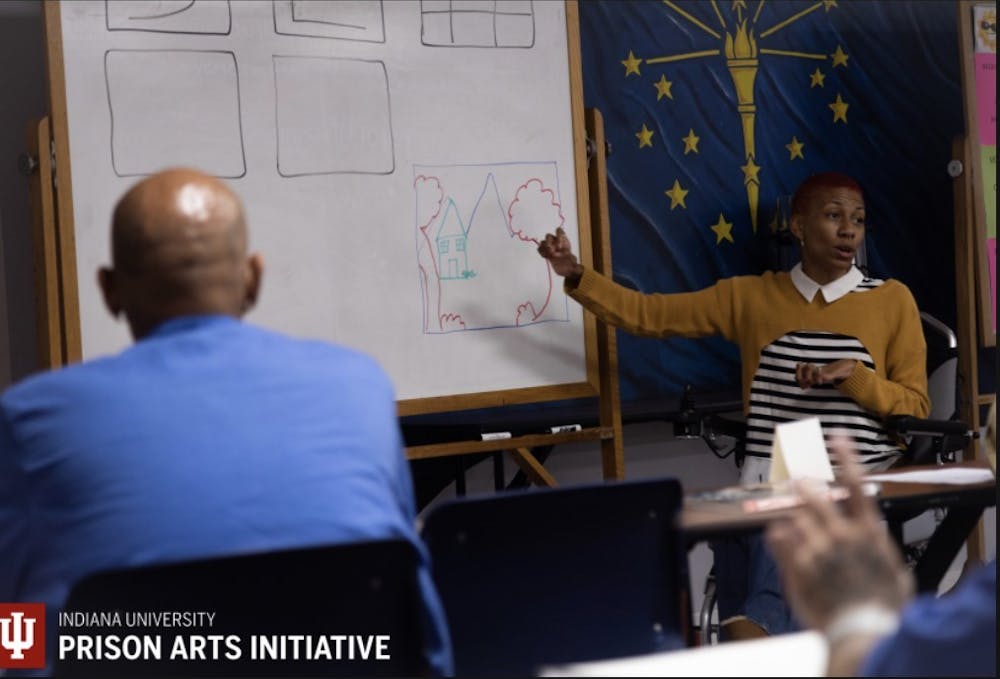The Indiana University Prison Arts Initiative began in Fall 2022 as an outreach partnership run through the IU Arts & Humanities Council and the IU Center for Rural Engagement. The initiative offers a 16-week, semester long course in prison using IU instructors.
Program coordinator Oliver Nell worked to organize the program and said there was a lot of people who were really interested in joining and becoming instructors.
“As we started having conversations, we realized there were a lot of people really interested who would help us,” Nell said. “We were also reaching out to prisons last spring to see who would be interested in having us, there was an amazing response.”
In July 2022, IUPAI was given the official go-ahead to offer their first drawing class in the fall.
“The students are learning the basics of drawing and visual arts,” Nell said. “We provide the supplies and instruction. They are working to compile a book for their final project. There is also a language component to the course where the students write captions for their drawings.”
IUPAI intentionally didn’t want to have a difficult process for students to enroll in the program, as no requirements are necessary.
“We were intentionally designing the course for all levels of experience,” Nell said. “The prison has specific requirements for the inmates in order to be qualified to be in the class; despite that, there were a lot of applications we received, and we had to narrow it down to 22 students.”
His hope for the future is that there is a lot more presence of the initiative on campus and that throughout this program there is sustainability.
“We wanted to open the doors to prison education,” Nell said. “It becomes a real lifeline for students, it can become damaging if you take this away from them. Sustainability is important, and we want to make sure this is something that can be replicated semester to semester with different instructors.”
Anna Doering, program manager of campus and community partnerships, said there is recent legislation that provides federal Pell grants to incarcerated students.
“There is a piece of legislation called The Second Chance Pell Program that was reinstated in 2015,” Doering said. “It offers federal grants through financial aid to inmates so they can get credit through college courses. There has been a big push for an expansion of the program across the state of Indiana, in hopes to give aid to inmates throughout state prisons.”
This program would allow inmates in Indiana to improve their outcome when coming out of prison, and inmates would use the grants to help support college-level course costs.
Once inmates are enrolled in the class, a normal class day starts with art instruction, followed by a writing lesson.
“Normally once everyone gets into the class, traditionally, the art teachers speak one-on-one with the students to see how their projects are going and talk individually with them,” Doering said. “After they have had a chance to speak with everyone in the class, they have their topic for the day and do their instruction for the class.”
In a classroom survey done in the art class, one student described the class as, “Peaceful and grateful. I kind of just zone out and it's like a way of communicating but in a way beyond words. It's really great.”
Writing instructor Destin Hubble said during class there is a workshop with the lesson for the day and they then work on captioning their art.
“We are not just teaching them to write a book, we are teaching them to caption their work as if it is hanging in a museum,” Hubble said. “It gives them the ability to reflect on their own work and describe it how they want.”
Hopes for the future include being able to allow the students to use these skills to progress to the reentry process, Hubble said.
“It is about reentry and adjusting to daily life outside the prison,” Hubble said. “We want to know exactly what is lacking and be able to provide that to those students. Something like this is what we must continue to expand. This can also provide a meditation stage for them throughout their reentry process, while becoming a way to express themselves.”




